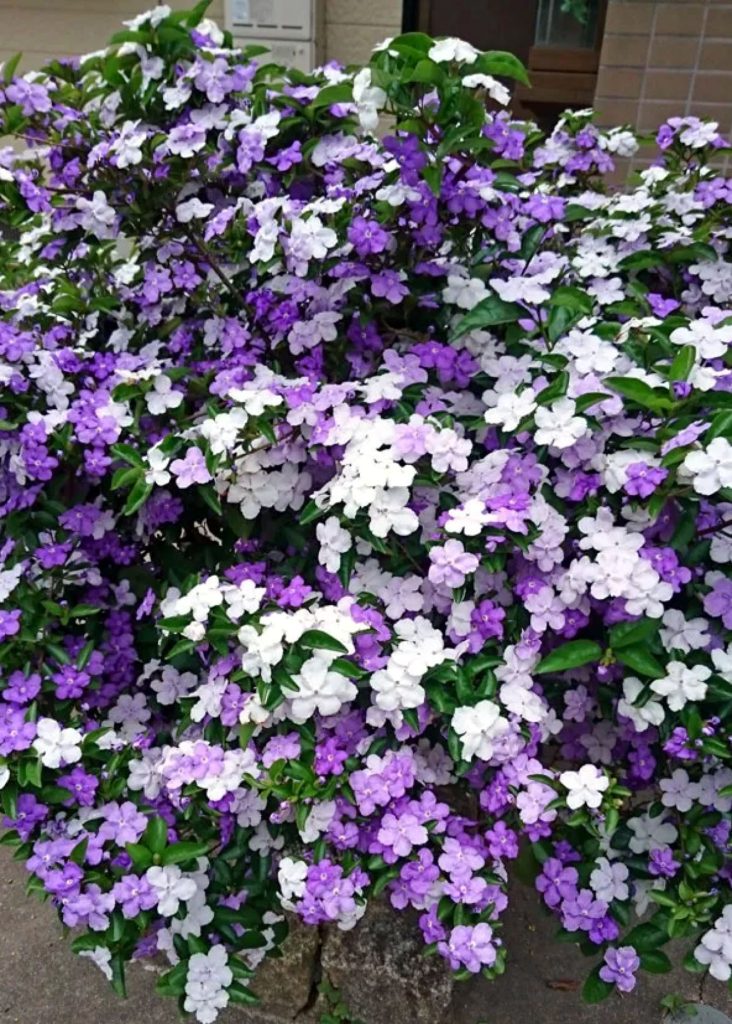
As I walked through the alleys of the town, a sweet fragrance wafted through the blowing breeze. Following the scent, I discovered a large Nioi-Ban-Matsuri planted in the vacant lot at the corner. Its flowers, a mixture of purple and white, along with intermediate shades, created an elegantly subtle blend of colors. While these flowers typically bloom from April to early August in a warm climate, this location, shielded from direct sunlight and caressed by cool winds, seems to maintain its vigor even now.
The characters “匂蕃茉莉 (Nioi-Ban-Matsuri)” break down to “匂” meaning fragrance, “蕃” signifying from a foreign land, and “茉莉” representing jasmine, collectively suggesting “fragrant jasmine from a foreign land.” The flowers start as a deep purple when they first bloom, then transition to a lighter purple, and within two days, they finally turn white. Their distinctive feature lies in their potent and enchanting aroma.
街中の路地裏を歩いていると、吹き抜ける風に混じって甘い香りが運ばれてきました。匂いを辿ると角の空き地に大きなニオイバンマツリ(匂蕃茉莉)が植えられています。紫色と白色、そしてその中間色の花が混じり合って、実に上品な色合いです。普通は4月〜8月上旬の温暖な気候の時期に咲く花ですが、直射日光を避けて、涼しい風が吹き抜ける場所なので今も勢いがあるのでしょう。
漢字の”匂蕃茉莉”は、匂(香り)があり、蕃(外国)からの、茉莉(ジャスミン類)の意味で「香りのある外国からのジャスミン」と言う意味合いからきています。花は咲き始めは濃い紫色で、次に薄い紫色、2日ほどで最後には白色になり、強い芳香があるのが特徴です。
